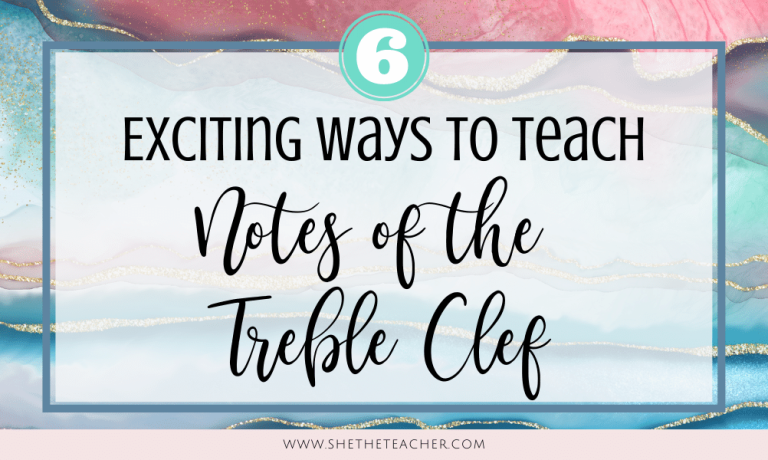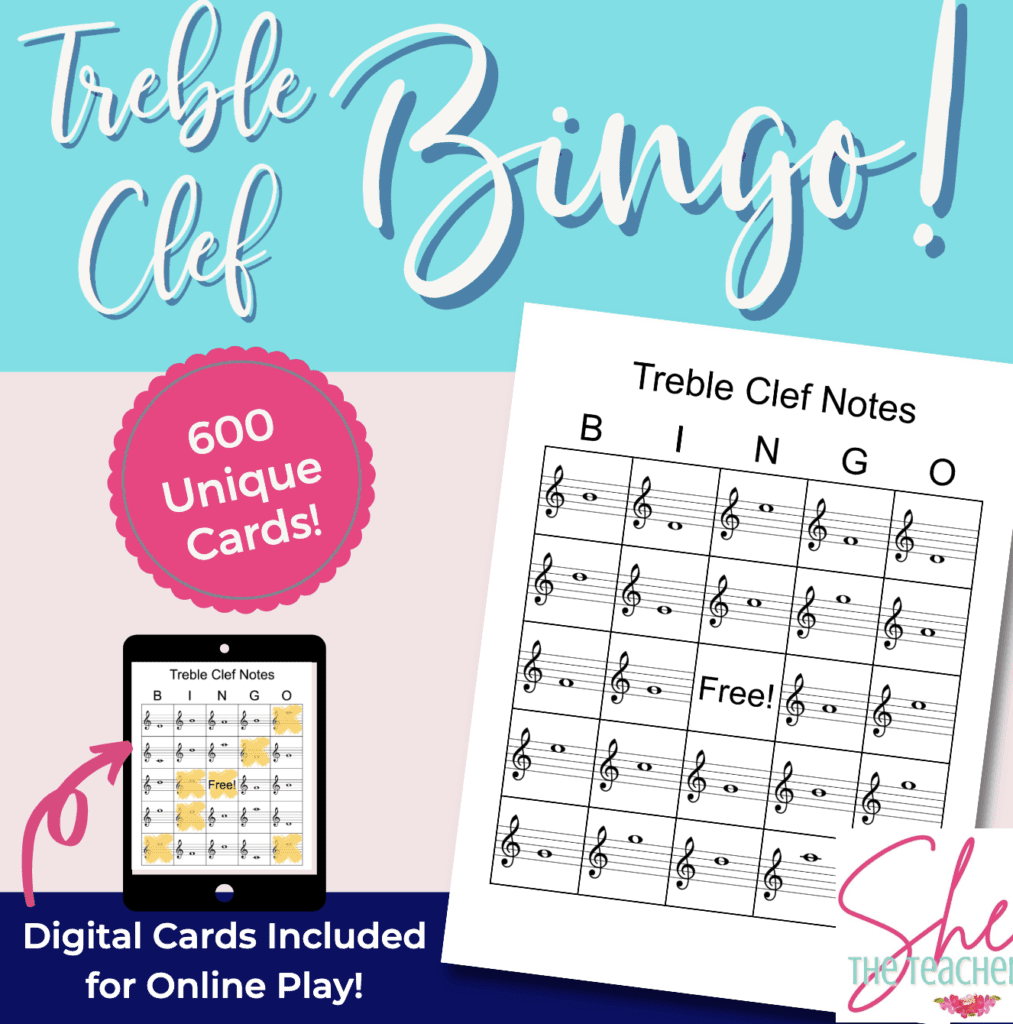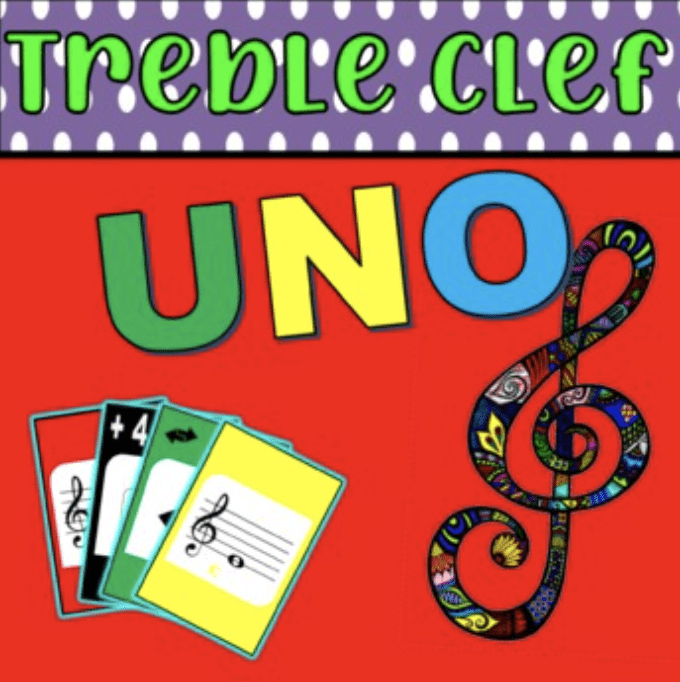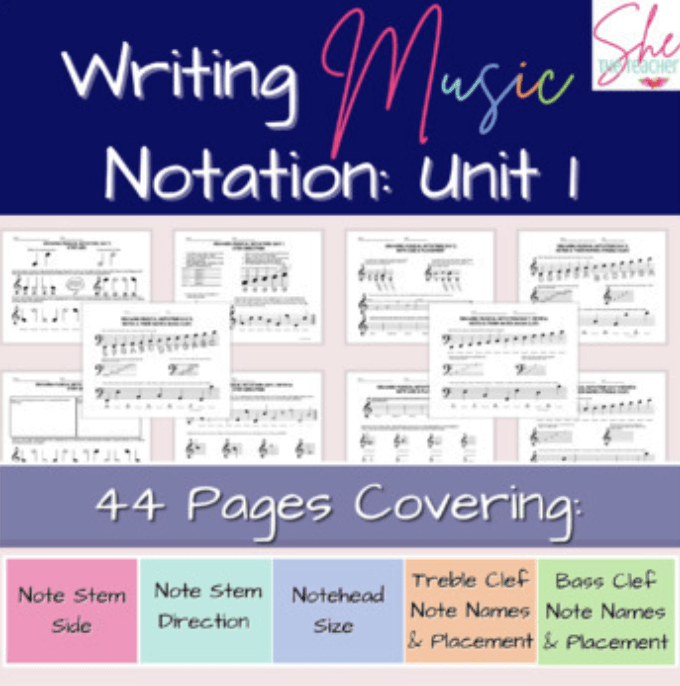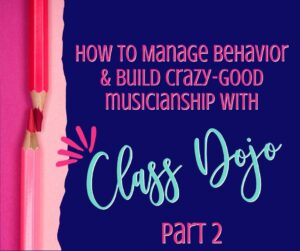The notes of the treble clef can arguably be the first glimpse of music theory that students get… but it can easily feel as fun as pulling teeth – painful and stressful for our students AND us!
How many of us learned through mnemonics (Every Good Boy Deserves Fudge) or through endless repetition of our treble clef notes through speed tests? Were you also subjected to flashcards?
🙋♀️
The notes of the treble clef are often the starting block of music theory on the staff in even the most basic of elementary or secondary music classrooms… which means it’s EXTRA important to get it right (and not lose our students’ love of music in the process)! 😁
Here are 6+ exciting ways to teach the notes of the treble clef through games, activities, and a little friendly competition!
Note: Some of these activities require the use of paper. Please reuse your activities where possible and recycle them when you’re done! 😁♻️🌎
1. Treble Clef “Snowball” Fight
Have you ever taught notes of the treble clef with a good ol’ fashioned snowball fight? You’re in for a treat!
- Create and print out squares (1/4 page) with treble clef notes on them- ideally 1 set per team.
- Crumple them up.
- Divide the class into smaller teams (3-5 players).
- Announce a letter out loud.
- The first player of each team will try to uncrumple the pieces of paper to find the note first.
- Once they find the note, they bring that paper to you to score a point and then throw it back into the middle of the room.
Scoring options: The first team to bring up a correct note scores the most points (and each subsequent team scores 1 less point), the first team to bring up the correct note scores ONLY, every team needs to build an octave, the first team to find all the (lines/space notes) wins, etc.
2. Treble Clef BINGO
Memorizing the notes of the treble clef is made SO much more fun when it’s played competitively through BINGO!
Students will each take a digital or a physical card and place markers on them when their note letter is called.
First one to score a classic bingo (5 across/diagonal/vertical), a frame (all outer edge), an “X-Out” (2 diagonals across the middle), blackout (all spaces covered), etc. WINS!
Click the picture below or HERE for my version of Treble Clef Bingo! Click here to learn more about my BINGO games.
3. Treble Clef “Hoops”
Challenge your students to learn the notes of the treble clef fast with “hoops” (also known as “Trashketball”)
Setup:
- Divide the class into teams (4-8 players work best).
- Determine what will be the “basketball” (can be a dodgeball or other soft item that can be thrown).
- Choose a “hoop” (can be a basket, trashcan, plastic bin, etc.)
- Create 3 different distances and mark them with tape or a small item:
- Level 1: 1-5 ft away from the “hoop” (worth 1 point)
- Level 2: 5-10 ft away from the “hoop ” (worth 2 points)
- Level 3: More than 10 ft away (worth 3 points)
- Have teams evenly space around the room. In teams, determine an order of players (who goes first, second, third etc.)
To Play:
- Move clockwise starting with the team closest to you. First, ask the first member of the team if they want an easy, medium, or hard example.
- Easy = a long amount of time (ex. 30 seconds) to solve
- Medium = a shorter amount of time to solve (ex. 20 seconds)
- Hard = shortest time (ex. 10 seconds)
- Set a timer for that amount of time.
- Project a certain number (I like to start with 4) random treble clef notes at the front of the room (use a free software like randomsheetmusic.com or a paid product like Sight Reading Factory).
- The team must then work together to help the first player say the letters out loud (in order) within the time they asked for.
- If they are correct (with no errors), the first person on their team can attempt a shot.
- Easy example (within the long amount of time), they can attempt a shot from the “Level 1” line.
- Medium example: They can attempt a shot from the “Level 1” OR “Level 2” line.
- Hard example: they can choose to shoot from any of the three level lines.
- The student attempts the shot and scores the according point if they make it.
- If a team does NOT answer correctly within their time OR they miss their shot, the next team clockwise has a chance to shoot from the first team’s line and “steal.”
- If that team misses the shot, the game restarts with the third team.
- Keep going through the line of students and clockwise.
- The game ends when one team meets a set goal (ex: 20 points).
4. Treble Clef “Hidden Messages”
Have you ever done an escape room? This “hidden message” activity is a fun way to practice note names that feels more like a secret code than a music theory activity.
Students will answer questions and identify notes on the staff. Once they have the correct answer, they will fill in all of that letter within the squares.
Once they have answered the questions correctly and shaded all corresponding squares, a secret word will appear!
Grab this activity in my TpT Store HERE:
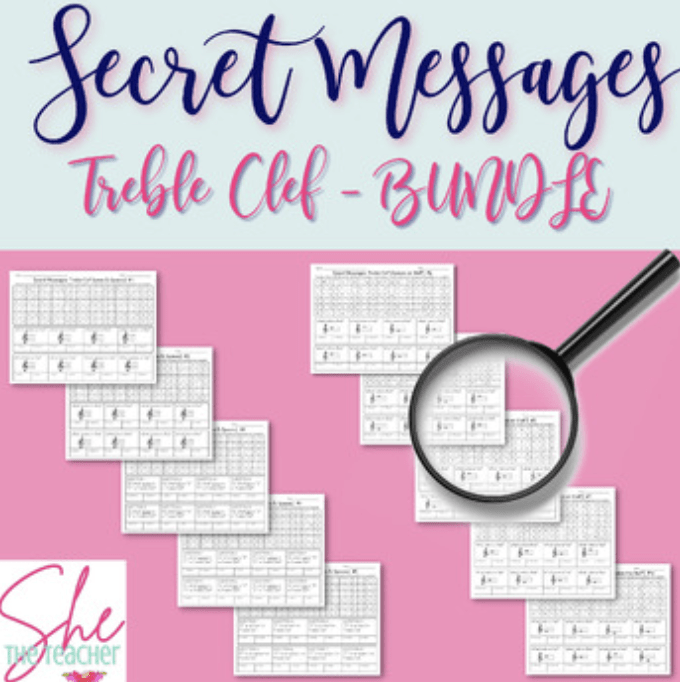
5. Treble Clef UNO
My 5th-8th grade music students LOVED this game from “Music with Jamie Eisler” called Treble Clef UNO!
The premise is the same as classic UNO, but playing helps students to get familiar with their notes on the treble clef staff.
6. Treble Clef GIMKIT
If you haven’t discovered the world of GIMKIT yet, now is the time! Gimkit allows your students to play individually or as teams to earn “money” to buy power-ups to attack or shield themselves from other players.
Set up your Gimkit using note images (check out my favorite note image generator from Bret Pimentel) and have your students compete for greatness using 1-1 devices or sharing a device per pair or group of students (and take turns).
One of the best things about GIMKIT is that you can play tons of different games to practice the same concepts (aka. you only need to add your images and questions ONCE for all game modes).
To learn more about the Gimkit game modes, watch the video below!
BONUS: Teach Music Theory Basics!
Looking for a curriculum/method to teach music theory (including notes of the treble clef) to your late elementary-early high school students?
I created my “Writing Music Notation, Unit 1” to act as a perfect primer for secondary students to jump into music theory without it being scary!
Check out the entire set HERE:
Let’s Chat!
What are your favorite ways to teach notes of the treble clef? Drop a note or a comment below! I’d love to hear from you!

